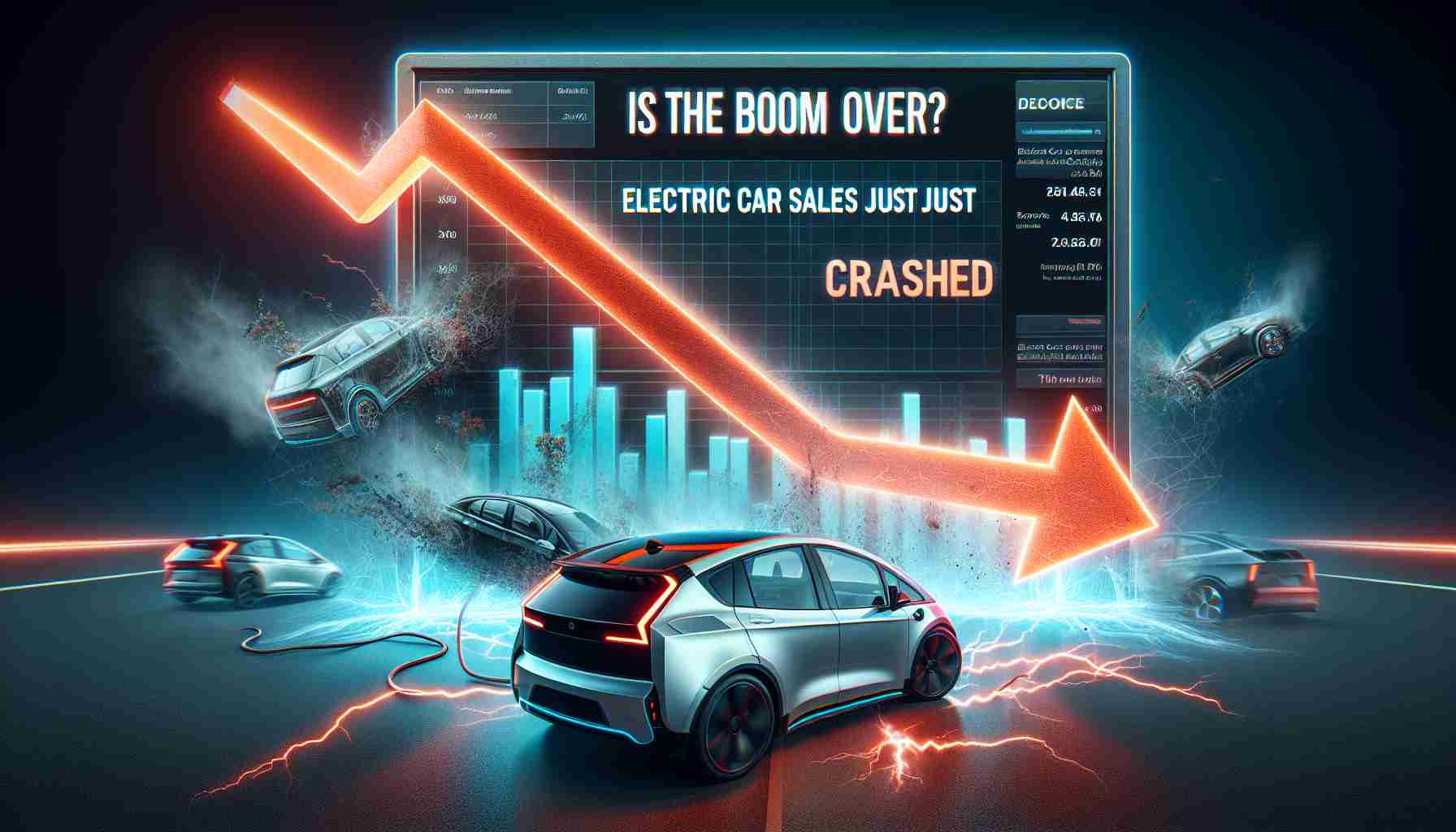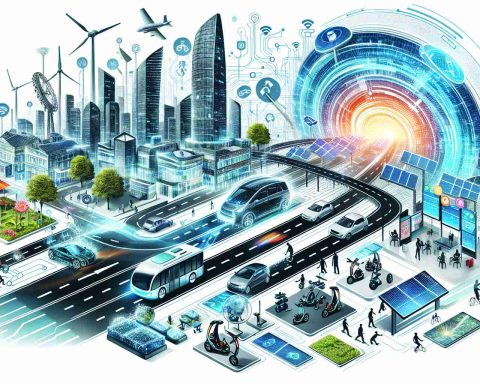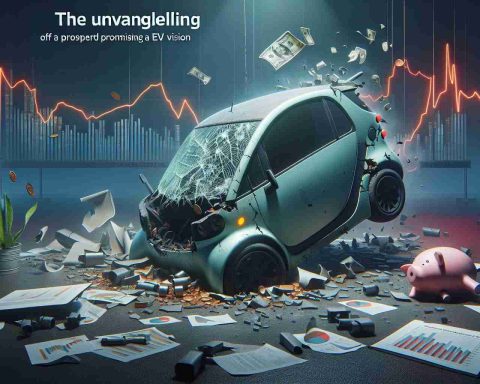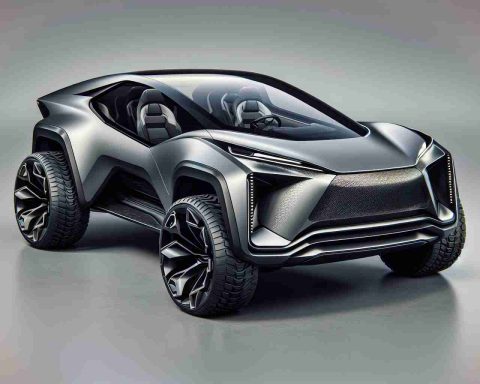The electric vehicle (EV) market in mainland China is experiencing a shocking downturn. Recent reports reveal that deliveries of pure electric and plug-in hybrid cars have dropped by a staggering 50%, amounting to only 206,000 units in the first 12 days of the year. This significant decline comes after a robust 42% increase in sales during the previous year, highlighting the inherent volatility within the largest EV market in the world.
Analysts had anticipated this slump due to the removal of governmental subsidies that incentivized EV purchases, which were phased out at the start of the new year. This shift signals ongoing uncertainty in the market despite the rising acceptance of electric vehicles among consumers.
In a bid to stimulate sales, the Beijing government had previously increased the trade-in subsidy to 20,000 yuan (approximately US$2,729) for buyers of electric vehicles last July, but this program concluded on December 31.
Despite the current downturn, December saw a surge in deliveries, with 1.38 million electric cars sold across the country, reflecting a 10% increase compared to November. This last-minute rush before the subsidy expiration illustrates consumer behavior heavily influenced by governmental policies. The future of EV sales in China remains uncertain as the market adapts to these changes.
Future of the Electric Vehicle Market in China: A Broader Perspective
The downturn in China’s electric vehicle (EV) market, characterized by a dramatic 50% drop in early-year deliveries, underscores a significant shift in societal and consumer dynamics. This decline highlights the vulnerability of the automotive industry to governmental policy changes, raising questions about the sustainability of consumer interest without financial incentives. As subsidies phase out, there is a growing concern about the long-term viability of the EV market—an industry pivotal to combating climate change and reducing urban pollution.
Moreover, this shockwave in the EV sector may have cultural implications. As consumers grapple with the perceived risks associated with EV investments, a possible shift towards traditional gasoline vehicles could emerge, thus undermining decades of progress towards sustainable transport systems. In a larger context, the global economy may feel these ripple effects, particularly in supply chains heavily reliant on EV production based in China.
Environmental Impacts and Future Trends
The immediate environmental effects of a slowdown in EV sales could be profound. With fewer electric vehicles on the road, emissions may rise, counteracting years of environmental policy aimed at reducing the carbon footprint. Looking forward, the long-term significance may involve an increased emphasis on innovation. Automakers may need to pivot towards hybrid solutions or enhance the technological allure of EVs to entice consumers back—integrating autonomous features or improving battery life and charging infrastructure could be key strategies.
As China grapples with this volatile landscape, it must also consider the global ramifications of its EV market. The world watches closely, as China’s success or failure may set a precedent for other nations aiming to transition to electric mobility. The path forward, albeit uncertain, will undoubtedly shape the future of transportation on a global scale.
China’s Electric Vehicle Market Faces Unprecedented Challenges: What You Need to Know
Overview of the Current EV Market in China
The electric vehicle (EV) market in China, the largest in the world, is undergoing a significant downturn, with deliveries for both pure electric and plug-in hybrid vehicles plummeting by 50% at the start of the year, totaling only 206,000 units sold in the first 12 days. This sudden decline starkly contrasts with the previous year’s performance, which saw an impressive 42% increase in sales.
Reasons Behind the Decline
Analysts attribute this sharp downturn primarily to the removal of governmental subsidies that previously incentivized EV purchases. As of January 1, the phase-out of these subsidies has left many potential buyers hesitant, leading to an uncertain market environment despite an increasing acceptance of electric vehicles among consumers.
Governmental Responses and Consumer Behavior
To bolster EV sales before the subsidy expiration, the Beijing government had increased the trade-in subsidy to 20,000 yuan (around US$2,729) for electric vehicle buyers in July. However, this program concluded on December 31, leading to a swift reaction from consumers who rushed to purchase vehicles, resulting in 1.38 million electric cars sold in December, a 10% increase compared to November.
Trends and Innovations in the EV Segment
Even amid the downturn, the electric vehicle industry in China has been witnessing crucial innovations and trends. Many manufacturers are focusing on improving battery technology, enhancing driving ranges, and reducing charging times. The growing trend of autonomous driving features in EVs is also gaining traction, as companies compete to offer advanced driver-assistance systems.
Pros and Cons of the Current Market Situation
Pros:
– Increased investment in EV technology and infrastructure.
– Enhanced competition among manufacturers leading to better consumer choices.
– Growing consumer awareness and preference for environmentally friendly vehicles.
Cons:
– Volatile sales amidst changing government policies.
– Uncertainty affecting consumer confidence in making purchases.
– Potential oversupply of EVs leading to price reductions and profit concerns for manufacturers.
Speculations on the Future of the EV Market
Looking ahead, industry experts predict potential growth stabilization as manufacturers adapt to the current landscape, potentially leading to new market strategies and innovative financing options to maintain consumer interest. Companies are likely to explore international markets to offset domestic declines and tap into global demand for electric vehicles.
Sustainability and Security Aspects
As the EV market evolves, sustainability remains a focal point. Manufacturers are increasingly focusing on sourcing materials responsibly, particularly battery materials, to minimize environmental impact. Additionally, security in terms of data privacy and vehicle connectivity is becoming increasingly crucial as EVs incorporate more technology.
Conclusion
The future of China’s electric vehicle market is clouded with uncertainty due to recent governmental policy changes and shifting consumer behavior. However, ongoing innovations, a focus on sustainability, and potential adaptations to market strategies may offer pathways for recovery and growth.
For more insights on the electric vehicle landscape in China, visit EV China.














